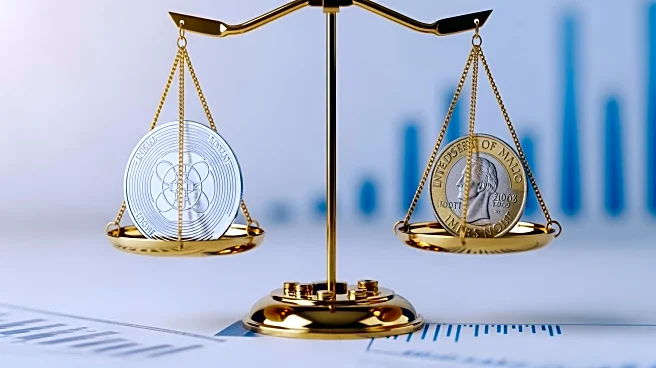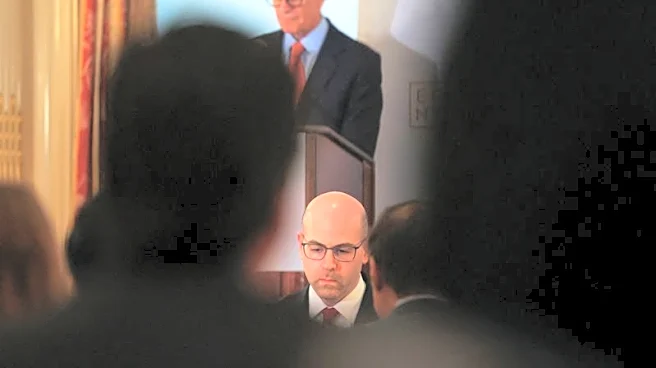What's Happening?
Federal Reserve Governor Stephen Miran has indicated that the increasing demand for stablecoins, which are cryptocurrencies pegged to the U.S. dollar, could lead to lower interest rates in the United States.
In a speech delivered in New York, Miran explained that the growth of stablecoins might reduce the 'neutral' rate of interest, known as 'r-star,' which neither stimulates nor slows economic growth. This could necessitate the Federal Reserve to lower its policy rate to prevent economic deceleration. Miran highlighted that stablecoins are boosting demand for U.S. Treasury bills and other dollar-denominated assets, potentially pushing the Fed's benchmark rate down by 0.4 percentage points. His remarks extend his previous advocacy for aggressive rate cuts, suggesting that stablecoins could structurally lower borrowing costs for years.
Why It's Important?
The potential impact of stablecoins on U.S. interest rates is significant for several reasons. Lower interest rates could stimulate economic growth by making borrowing cheaper, benefiting businesses and consumers. However, it also poses challenges for the Federal Reserve in managing inflation and maintaining economic stability. The rise of stablecoins could further integrate digital finance into the traditional financial system, influencing monetary policy decisions. This development could affect the U.S. government's borrowing costs and the attractiveness of dollar-denominated assets globally, reinforcing the dollar's dominance in international finance.
What's Next?
As stablecoins continue to gain traction, the Federal Reserve may need to adjust its monetary policy to accommodate the changing financial landscape. This could involve lowering interest rates further to support economic growth. The integration of stablecoins into the financial system may prompt regulatory scrutiny and policy adjustments to ensure stability and prevent potential risks associated with digital currencies. Stakeholders, including policymakers and financial institutions, will likely monitor these developments closely to assess their impact on the economy and financial markets.












